Results 5,301 to 5,310 of 12096
Thread: Anandtech News
-
09-01-15, 02:12 AM #5301
Anandtech: Western Digital Updates My Cloud Mirror NAS, Releases My Cloud OS 3
Western Digital markets their NAS lineup under the 'Personal Cloud' category. This is further sub-divided into three markets, the 'Consumer Series' (the MyCloud units), 'Expert Series' (the EX units) and the 'Business Series' (the DL units). At IFA 2015, WD took the opportunity to announce some updates to their NAS units. On the hardware side, there is a refresh of the My Cloud Mirror (2-bay version) with an updated internal platform. On the software front, the next major version of My Cloud OS (v3) with plenty of interesting features is being made available for download.
In the conference call to discuss this announcement, WD presented plenty of interesting facts - 50% market share amongst 1- and 2-bay NAS units in the US and 30% amongst all consumer NAS units in the EMEA regions. Surprisingly, they also indicated that more than 1.6M My Cloud and My Cloud Mirror units have
been sold so far (and more than 5M My Cloud App downloads).
My Cloud OS 3
The number one feature that My Cloud OS 3 brings to users is the 'Sync' capability. It works similar to Dropbox. In the NAS market, it can be thought of as an equivalent feature for Synology's Cloud Station or QNAP's QSync.
Sync allows data in a given PC's folder to be mapped on to a sync folder on the WD My Cloud NAS. The data here can be automatically kept synchronized with a folder on another PC that also has the WD Sync program running. The Sync program also allows for versioning on the synced files.
My Cloud OS 3 continues the ease of use of the cloud access from an external network - either through port forwarding or a relay connection via WD's servers. The My Cloud mobile app can also backup photos and videos from an iOS or Android device to the My Cloud NAS.
My Cloud OS had decent support for multimedia - photos and videos could be streamed like an album. OS 3 brings in a completely new feature 'My Cloud Albums' - it is possible to share a particular folder on the NAS with a group of friends.
The settings on the mobile app with everyone in the group can be configured to upload all photos taken withing a particular timestamp into the shared common folder.
WD is also launching a developer program with two approaches. A My Cloud API is being provided to access content on a My Cloud device. A My Cloud SDK can be utilized to write an application that can run on a My Cloud device using Docker.
A list of partners is also being announced for the My Cloud OS:
- Milestone Surveillance - The Arcus VMS is being supported on the My Cloud devices with two free camera licenses (more can be purchased via the WD store)
- PLEX - This media server app has already been available on My Cloud for quite some time.
- Adobe - For the cloud-based subscription to Creative Suite, Adobe is allowing users to store media locally on a My Cloud device instead of going to the cloud for that purpose.
My Cloud OS 3 will be made available for download on September 21st.
My Cloud Mirror Gen 2
The My Cloud Mirror has been one of the popular members of the Consumer series, and WD is bumping up the specs of this 2-bay NAS today. The Gen 2 device is based on a Marvell ARMADA 385 dual-core 1.33 GHz solution sporting 512 MB of RAM. External features include a single GbE link and two USB 3.0 ports. The unit comes factory-configured in RAID-1. This is a step up from the ARMADA 370 single-core 1.2 GHz solution in the Gen 1 version.
The units are available for pre-order now, and in stores on September 30th. The 4TB, 6TB and 8TB units come in at $310, $380 and $430 respectively. WD also includes 3 user licenses for SmartWare 2.0 Pro with the My Cloud Mirror Gen 2.
It is heartening to see Western Digital put efforts and focus into the NAS market. They may have a lot of catching up to do to be technically on par with vendors such as QNAP or Synology. However, their channel presence as well as the focus on not overwhelming the lowest common denominator customer bodes well for their continued success in the consumer NAS space.
More...
-
09-01-15, 07:38 AM #5302
Anandtech: The Mobile CPU Core-Count Debate: Analyzing The Real World
Over the last 5 years the mobile space has seen a dramatic change in terms of performance of smartphone and tablet SoCs. The industry has seen a move from single-core to dual-core to quad-core processors to today’s heterogeneous 6-10 core designs. This was a natural evolution similar to what the PC space has seen in the last decade, but only in a much more accelerated pace. While ILP (Instruction-level parallelism) has certainly also gone up with each new processor architecture, with designs such as ARM’s Cortex A15 or Apple’s Cyclone processor cores brining significant single-threaded performance boosts, it’s the increase of CPU cores that has brought the most simple way of increasing overall computing power.
This increasing of CPU cores brought up many discussions about just how much sense such designs make in real-world usages. I can still remember when the first quad-cores were introduced that users were arguing the benefit of 4 cores in mobile workloads and that these increases were just done for the sake of marketing. I can draw parallels between those discussions from a few years ago and today’s arguments about 6 to 10-core SoCs based on big.LITTLE.
While there have been some attempts to analyse the core-count debate, I was never really satisfied with the methodology and results of these pieces. The existing tools for monitoring CPUs just don’t cut it when it comes to accurately analysing the fine-grained events that dictate the management of multi-core and heterogeneous CPUs. To try to finally have a proper analysis of the situation, for this article, I’ve tried to approach this issue from the ground up, and not relying on any third-party tools.
More...
-
09-01-15, 07:38 AM #5303
Anandtech: Seagate Announces a Trio of 8TB Drives for Enterprise Applications
Seagate was the first hard drive vendor to launch a cost-effective 8TB hard drive. The Archive HDD v2 (ST8000AS0002) uses Shingled Magnetic Recording (SMR) to drive up the areal density of the platters and the 8TB version used six 1.33TB platters. The only other 8TB drive currently in the market is the HGST Ultrastar He8, which uses helium filled sealed drives with seven platters.
Seagate is announcing their plans for three new 8TB drives today, mainly targeting enterprise usage. The three 8TB models that join the already existing Archive HDD are:
- Enterprise Capacity 3.5 HDD v5
- Enterprise NAS HDD
- Kinetic HDD
The Enterprise Capacity 3.5 HDD v5 uses traditional PMR (perpendicular magnetic recording) and targets applications such as web, e-mail and SMB servers as well as areas requiring bulk storage. The design uses 6 platters (1.33TB/platter) pointing to an increase in areal density over competing drives. Thanks to the 256MB cache, it provides 100%+ faster random read-writes over the last generation Enterprise Capacity 3.5 HDD v4.
It comes in both SATA 6 Gbps and SAS 12 Gbps versions, and supports Seagate's RAID Rebuild (PDF) feature.
Consistent with the enterprise positioning, we also have a SED (self-encrypting drive) variant.
The other interesting aspects of the Enterprise Capacity 3.5 HDD v5 include power loss protection (needed in part due to the larger cache) and a PowerBalance feature. The latter offers optional trade-off in performance for saving power. However, the firmware programming necessary to activate this feature will be made available only to OEMs and not small scale end customers.
The Enterprise NAS HDD family is also getting the capacity boost to 8TB. The target market is medium to large business customers with requirements for 24x7 enterprise-class storage for mid-range NAS, RAID and cloud applications. This is the same target segment as before (1-16 bay tower / rackmount enclosures). The power consumption of the Enterprise NAS HDD is lower than the corresponding nearline drives. The Enterprise NAS HDD comes with a 5-year optional 'Rescue Data Recovery' service that was discussed in our coverage of the Enterprise NAS HDD launch last year. Like the Enterprise Capacity HDD v5, the Enterprise NAS HDD 8TB version is also based on PMR / 1.33TB/platter technology.
The MTBF, workload ratings and other important characteristics of the various drives offered by Seagate are summarized in the table below.
I had already talked about Kinetic HDDs in our coverage of Seagate at CES 2015. As a recap, the Kinetic HDDs do away with the need for a separate NAS server by presenting two Ethernet links over what looks like a SATA connector. Seagate is sharing some updates today regarding the Kinetic lineup. It is important to note that Kinetic is not a Seagate-only initiative, as Toshiba has also pledged support as a drive vendor for this ecosystem.
As part of the updates, Seagate shared the planned release of the Kinetic OneStor, a 5U 84-bay storage pod, in November this year. In January 2016, the Kinetic HDD 8TB will launch. Unlike the other two 8TB drives being announced today, the Kinetic HDD 8TB will be based on SMR technology.
The two PMR 8TB drives will be available towards the end of October. Seagate did not disclose any pricing information.
More...
-
09-01-15, 10:34 PM #5304
Anandtech: The Intel Skylake Mobile and Desktop Launch, with Architecture Analysis
Intel’s 6th Generation of its Core product line, Skylake, is officially launching today. We previously saw the performance of the two high end Skylake-K 91W processors, but that was limited in detail as well as product. So it is today that Intel lifts the lid on the other parts from 4.5 W in mobile through Core M, to 15W/28W in Skylake-K, 45W in Skylake-H and then the 35W/65W mêlée of socketed Skylake-S parts. For today's formal launch we will be taking a look at the underlying Skylake architecture, which was unveiled by Intel at their recent Intel Developer Forum this August.
More...
-
09-02-15, 02:33 AM #5305
Anandtech: Lenovo Refreshes Ideapad Lineup With Windows 10, Skylake, and Carrizo
This week is the IFA conference, and while traditionally a mobile focused show, Microsoft’s recent launch of Windows 10 coupled with Intel’s launch of the new 6th generation Skylake architecture means that PC makers are taking the opportunity to refresh their PC lineup here. Lenovo has updated much of their lineup.
The Ideapad 100S is a new model to the lineup, which is going after the budget conscious consumer. We’ve actually seen quite a few laptops targeting this spot over the last year, driven by Microsoft’s free licensing for Windows on low cost devices coupled with competition from Chromebooks. Lenovo’s two models in the Ideapad 100S range are an 11.6-inch and 14-inch model. The 11.6-inch model leverages tablet class parts, including an Intel Atom Z3735F quad-core processor coupled with 32 GB of eMMC and up to 2 GB of DDR3L memory. The 14-inch model switches from a tablet class quad-core to the dual-core Celeron N3050 which is also based on the Atom cores, but this time the 14nm Airmont cores. The Celeron has more TDP to play with, and has a higher base and turbo frequency. The 14-inch is listed as either up to 64 GB of eMMC or 256 GB SSD possibly in some markets. The low resolution 1366x768 display is likely going to be TN on something this low cost.
Keeping with the “S” slim lineup, the ideapad 300S comes in both an 11.6 and 14-inch model. The smaller one will be powered by Braswell with the Pentium N3700. This is a quad-core processor based on Airmont cores. The 14-inch model will be offered with up to Core i7 though, and the larger display also comes with a 1920x1080 resolution. The small model sticks with integrated graphics but the 14-inch version will be offered with the GeForce 940M.Lenovo ideapad 100S 100S 11.6" 100S 14" CPU Intel Atom Z3735F (quad-core 1.33 -1.83GHz 22nm 2.2 W SDP) Intel Celeron N3050 (dual-core 1.6 - 2.16GHz 14nm 4 W SDP) RAM up to 2GB up to 2 GB Storage up to 32GB eMMC up to 64GB eMMC / 256GB SSD GPU Intel HD Intel HD Display 11.6" 1366x768 14" 1366x768 Battery Up to 8 hours Up to 8 hours Networking 802.11n w/ BT 4.0 802.11n w/ BT 4.0 Weight 1 kg / 2.2 lbs 1.4 kg / 3.1 lbs Dimensions (mm) : 292 x 202 x 17.5
(inches) : 11.5" x 7.95" x 0.69"(mm) : 337.4 x 234.9 x 18.6
(inches) : 13.28" x 9.25" x 0.73"Price $189 $259 OS Windows 10 Home Windows 10 Home
Next up in the slim line is the ideapad 500S which is a lineup of three sizes, with 13.3, 14, and 15.6-inch models available in ebony black, platinum silver, or flamenco red. These are available with Skylake, and can be had with discrete graphics as well. The smaller 13.3-inch model can be had with the GeForce 920M GPU, and the larger 14 and 15.6-inch models offer the more powerful GeForce 940M. The displays on offer are up to 1920x1080, and storage is up to 256 GB of SSD or up to 1 TB of hard drive.Lenovo ideapad 300S 300S 11.6 300S 14 CPU Intel Pentium N3700 Up to 6th gen Core i7 RAM up to 8GB DDR3L up to 8 GB DDR3L Storage up to 64GB eMMC
500GB SSHD/1TB HDDup to 256GB SSD
up to 1TB SSHD / 1TB HDDGPU Intel HD Intel HD / up to GeForce 940M Display 11.6" 1366x768 14" 1920x1080 Battery Up to 5 hours Up to 5 hours Networking 802.11ac w/ BT 4.0 802.11ac w/ BT 4.0 Weight 1.3 kg / 2.9 lbs 1.9 kg / 3.9 lbs Dimensions (mm) : 299 x 209 x 21.8
(inches) : 11.77" x 8.23" x 0.86"(mm) : 340 x 240 x 19.5
(inches) : 13.38" x 9.45" x 0.77"Price n/a $479+ OS Windows 10 Home Windows 10 Home
Moving down in price a bit is the ideapad 300 which is offered in 14, 15.6, or 17.3-inch sizes. The smaller two models are offered with the Pentium N3700 Braswell processor as a base option, or you can choose Intel’s more powerful Core as well. All are available with discrete GPUs, with the Braswell models being available with the GeForce 920M, and the Core models available with the Radeon R5 M330. System memory is up to 8 GB on Braswell, and 16 GB of DDR3L on Core. The display can be up to 1920x1080.Lenovo ideapad 500S 500S 13.3" 500S 14" 500S 15.6" CPU Up to 6th Gen Core i7 RAM up to 8GB DDR3L Storage 128GB SSD
500GB SSHD/1TB HDDup to 256GB SSD
up to 1TB SSHD / 1TB HDDGPU Intel HD / Up to GeForce 920M Intel HD / up to GeForce 940M Display 13.3" 14" 15.6" 1920x1080 Battery Up to 4.5 hours Networking 802.11ac w/ BT 4.0 Weight 1.5 kg / 3.4 lbs 2.1 kg / 4.6 lbs 2.1 kg / 4.6 lbs Dimensions (mm) : 323 x 230 x 19.3
(inches) : 12.72" x 9.05" x 0.76"(mm) : 380 x 260 x 20.5
(inches) : 14.96" x 10.24" x 0.81"(mm) : 380 x 260 x 20.5
(inches) : 14.96" x 10.24" x 0.81"Price n/a OS Windows 10 Home
Next up is the ideapad 500 series, which is quite interesting because there will be versions with both AMD’s Carrizo CPU and versions with Intel’s Skylake processors. The AMD based on has a starting price of $100 less. There will be 14-inch and 15.6-inch models available with up to 1920x1080 resolution. The AMD based one can be had with the FX-8800P APU which is the top tier from AMD, and the AMD Radeon R5 M330. It will be available with up to 8 GB of memory, and both SSD and HDD storage options are available. The Intel version can be had with up to Core i7, and the GPU option is the AMD Radeon R7 M360 which has more stream processors than the R5 M330 available with Carrizo on this laptop.Lenovo ideapad 300 300 14" 300 15.6" 300 17.3" CPU Up to Pentium N3700
Up to 6th Gen Core i7up to 6th gen Core i7 RAM up to 8GB DDR3L (Braswell) or 16 GB DDR3L (Skylake) Storage 128GB SSD option with Skylake
up to 1TB HDD or SSHDGPU Intel HD / Up to GeForce 920M (Braswell)
Up to Radeon R5 M330 (Skylake)Display 14" 1920x1080 15.6" 1920x1080 17.3" 1600x900 Battery Up to 4 hours Networking 802.11ac w/ BT 4.0 Weight 2.1 kg / 4.63 lbs 2.3 kg / 5.07 lbs 3.0 kg / 6.61 lbs Dimensions (mm) : 349 x 245 x 22.9-23.4
(inches) : 13.74" x 9.64" x 0.90"-0.92"(mm) : 384 x 265 x 22.9-23.4
(inches) : 15.11" x 10.43" x 0.90"-0.92"(mm) : 418 x 292.6 x 25.1
(inches) : 16.45" x 11.51" x 0.99"Price $399+ $549+ $449+ OS Windows 10 Home
Lenovo is also refreshing their All-in-One lineup with the ideacentre AOI 700 Series. There will be a 24-inch model and 27-inch model and both can be had with up to UHD 3840x2160 resolution. Skylake is available again, along with the NVIDIA GTX 950A GPU. These devices will support Windows Hello, with the Intel RealSense 3D Camera available on this AIO. The AIO also has stereo JBL speakers with a 2 x 3 watt amplifier.Lenovo ideapad 500 500 14" 500 15.6" CPU Up to AMD Carrizo FX-8800P APU
Up to 6th gen Intel Core i7RAM up to 16GB DDR3L Storage 128GB SSD option with Carrizo
up to 1TB HDD or SSHDGPU Radeon R5 M330 (AMD)
Intel integrated or Radeon R7 M360 (Intel)Display 14" 1920x1080 15.6" 1920x1080 Battery Up to 4 hours Networking 802.11ac w/ BT 4.0 Weight 2.1 kg / 4.6 lbs 2.3 kg / 5.1 lbs Dimensions (mm) : 347 x 249 x 24.4
(inches) : 13.66" x 9.80" x 0.96"(mm) : 384 x 265 x 24.6
(inches) : 15.12" x 10.43" x 0.97"Price $399+ (AMD) $499+ (Intel) $599 (AMD) $849 (Intel) OS Windows 10 Home
The list just keeps going, and next up is a new tablet from Lenovo. The ideapad MIIX 700 is a 12-inch tablet with a 2160x1440 resolution, which you may notice is the same resolution and aspect ratio as the Microsoft Surface Pro 3. The similarities don’t stop there, with the MIIX 700 available with a kickstand and folio case with keyboard dock. It is powered by up to Core i7 as well, and you can get it with 8 GB of LPDDR3 memory and 256 GB SSD. It also features the Intel RealSense 3D camera, and therefore supports facial recognition login with Windows Hello. For those that need to use it on the go, it can be outfitted with optional LTE support.Lenovo ideacentre AIO 700 Series AIO 700 24" AIO 700 27" CPU Up to 6th gen Intel Core i7 RAM up to 16GB DDR4 Storage up to 192GB SSD
up to 2TB SSHD or HDDGPU GeForce GTX 950A Display 23.8" 3840x2160 15.6" 1920x1080 Camera 1080p w dual mic Optional Intel RealSense 3D Camera Networking 802.11ac w/ BT 4.0 Price $1,099 $1,899 OS Windows 10 Home
Finally, Lenovo is offering the Chromebook 100S, which is powered by the Intel Celeron N2840. This is two Silvermont cores, and is on the 22nm process. As is typical with a Chromebook, 16 GB of eMMC is available and up to 2 GB of RAM. Lenovo is claiming up to eight hours of battery life on this $179 Chromebook.Lenovo MIIX 700 Tablet MIIX 700 Tablet CPU Up to 6th gen Intel Core m7 RAM up to 8GB LPDDR3 Storage up to 256GB SSD GPU Intel graphics Display 12" 2160x1440 Camera Optional Intel RealSense 3D Weight 780g / 1.7 lbs Dimensions (mm) : 292 x 210 x 8.95
(inches) : 11.49" x 8.27" x 0.35"Networking 802.11ac w/ BT 4.0, LTE Optional Price $699+ OS Windows 10 Home or Pro
Clearly there has been some pent up designs waiting on the release of both Skylake and Windows 10, and Lenovo has an offering for much of the consumer space with these new models and refreshes. There are a couple of very interesting plays here, like the MIIX 700 tablet which is clearly a play at the Surface Pro 3, with the same screen size and resolution, but a $699 starting price. I’d be very interested in checking out the ideapad 500 with both the Carrizo and Skylake offerings to see how they stack up to each other, so we will have to try and get some for review.Lenovo Chromebook 100s Chomebook 100S CPU Up to Intel Celeron N2840 RAM Up to 2GB RAM Storage 16 GB eMMC GPU Intel graphics Display 11.6" 1366x768 Weight 1.2 kg / 2.6 lbs Dimensions 19mm thick Networking 802.11ac w/ BT 4.0, LTE Optional Price $179+ OS Chrome OS
Gallery: Lenovo IFA PC Refresh




Source: Lenovo
More...
-
09-02-15, 02:33 AM #5306
Anandtech: Lenovo Launches ThinkPad Yoga 260 And 460 Models Plus ThinkCentre M900 Tin
In addition to the consumer PC refresh, Lenovo is updating and relaunching some of its business devices. The ThinkPad Yoga is the prosumer level version of the Yoga series, and includes the 360° hinge which allows it to be used as a laptop, or in three touch modes. Lenovo is also rolling out the ThinkCenter M900 Tiny, which is its latest rendition of the ultra-compact form factor for businesses.
The ThinkPad Yoga series started with just a single 12.5-inch model, but last year Lenovo added a couple of larger sizes as well. The Yoga 260 and Yoga 460 are the new 12.5 and 14-inch models respectively. Both are built like a ThinkPad, and include things like carbon fibre in the chassis and the ThinkPad trademark TrackPoint. The ThinkPad Yoga lineup also continues to offer stylus support.
The Yoga 260 features a 12.5-inch display with both 1366x768 and 1920x1080 offerings. The latest models are of course updated with Intel’s new Skylake-U series processors, with everything from i3-6100U all the way up to i7-6600U models available. You can outfit the laptop with up to 16 GB of DDR4 RAM and up to 512 GB of SSD storage. Battery life is rated at 10 hours on this model.
The ThinkPad Yoga 460 is the 14-inch version, and it can be had with either 1920x1080 IPS or 2560x1440 IPS panels. The processor choices are just listed as Core i5 and i7 models, but it should be the same U series as the smaller 260 mode but with an optional GeForce 940M GPU. The 460 can only be had with 8 GB of DDR3L memory, a 256 GB SSD, or a 1 TB HDD. Battery life is rated the same as the 260, coming in at 10 hours.
Networking is now upgraded as well, likely with the Intel 8265 card which offers 802.11ac as well as Bluetooth 4.1. The 260 model offers LTE-A support as an option.
Since these are ThinkPads, they can be custom ordered, and you can get options such as smart card readers and fingerprint readers if necessary.Lenovo ThinkPad Yoga ThinkPad Yoga 260 ThinkPad Yoga 460 CPU Up to 6th gen Intel Core i7 U series RAM up to 16 GB DDR4 up to 8 GB DDR3L Storage Up to 512 GB SSD Up to 256 GB SSD / 1 TB HDD GPU Intel graphics Intel graphics or GeForce 940M Display 12.5" 1366x768 or 1920x1080 14" 1920x1080 or 2560x1440 Weight 1.3 kg / 2.9 lbs 1.8 kg / 3.9 lbs Dimensions (mm) : 309.9 x 220 x 17.8
(inches) : 12.20" x 8.66" x 0.70"(mm) : 338 x 236 x 19
(inches) : 13.30" x 9.29" x 0.74"Networking 802.11ac w/ BT 4.1, LTE Optional Price $949+ $1049+ OS Windows 10 or Windows 7
For those looking for small desktop PC replacements, the ThinkCentre Tiny series has offered some interesting solutions for several years now. The M900 can be equipped with a monitor with built-in mounting bracket, and the M900 is also outfitted with Skylake processors. The small form factor device can be outfitted with up to 32 GB of DDR4 memory, and a wide selection of storage offerings including a 512 GB SSD or 2 TB HDD. There are six USB 3.0 ports, Ethernet, headset jack, card reader, and even a serial port option. Wifeless is either a single stream 802.11ac option or 2x2:2 802.11ac.
The All-in-One offering is a 23-inch 1920x1080 monitor which can be had with or without touch.
I’ve been a big fan of the Yoga series over the years, and the ThinkPad Yoga seems to be a pretty well built two-in-one device. Hopefully we can get a couple of these in to test and review.Lenovo ThinkCentre Tiny M900 CPU Up to 6th gen Intel Core i7 U series RAM up to 32GB DDR4 Storage Up to 512 GB SSD or up to 2TB HDD GPU Intel graphics AIO Display 23.8" 1920x1080 Camera 1920x1080 with 2 microphones (Lync Certified) Networking 802.11ac w/ BT, Ethernet Price $749+ OS Windows 10 or Windows 7
Source: Lenovo
More...
-
09-02-15, 06:30 AM #5307
Anandtech: ASUS Details The ZenWatch 2: Coming In October
At this year's Computex Taipei ASUS released some teaser information about the upcoming ZenWatch 2. At the time we knew what the ZenWatch 2 would look like, but there weren't any details about the display size, case size, battery, display, or any other aspects of the hardware. Three months later, we're much closer to ASUS's planned launch of the ZenWatch 2, and they've decided to release essentially all the information one would need to know about the watch.
For starters, the ZenWatch 2 comes in two sizes. the first has a 1.45" AMOLED display with a resolution of 280x280, while the second has 1.63" AMOLED display with a resolution of 320x320. The case dimensions of the smaller and larger model are 45.2 x 37.2mm and 49.6 x 40.7mm respectively. While I appreciate that ASUS has put in the effort to try and accommodate users with smaller wrists, I think it's still going to leave out a very large segment of the market in the same way that all previous Android Wear devices have done. Let me explain why.
Consider that the smaller ZenWatch W1502Q has a square display with a 1.45" diagonal, which equates to a screen area of roughly 1.05 square inches. As a point of comparison, the 42mm Apple Watch, which is the larger of the two models, has a 5:4 display with a 1.5" diagonal. This means that it has a slightly larger area of 1.1 square inches. Despite the 42mm Apple Watch having a larger display, the dimensions of the watch case are significantly smaller in both the vertical and horizontal dimensions. If a user finds the 42mm Apple Watch to be too big, they'll certainly feel that more strongly about even the smaller model of the ZenWatch 2. I happen to fall into that group of users with smaller wrists, and when I originally heard that the ZenWatch 2 would come in two sizes I was hoping for something even smaller than this as I haven't been able to find an Android Wear watch that I can wear comfortably yet.
If you are a user that finds one of the ZenWatch 2 models to be a comfortable fit then your watch will come with 4GB of internal NAND, 512MB of LPDDR2 memory, and Qualcomm's APQ 8026 SoC which has four Cortex A7 cores with a max frequency of 1.2GHz, although no Android Wear devices ramp up the SoC like they would do so in a smartphone. The ZenWatch 2 also includes a 6-axis gyroscope, an accelerometer, and a sensor for tracking the user's heart rate.
As for the battery life, the smaller W1502Q has a 300mAh battery, while the larger W1501Q increases that to 400mAh. ASUS rates the larger model for over 2.5 days of use in ambient mode, and the smaller one for more than 2 days of use in ambient mode. Battery life will obviously vary greatly depending on a user's workload.
The ASUS ZenWatch 2 will be available sometime in October. The larger model will be priced at 149 euros, while the smaller will surprisingly cost more at 169 euros. It will launch with three different straps, with one being a fabric strap, one being leather, and one being metal. Each strap will have a choice of three different colors, and it's a safe bet that the metal band will come with a price premium.
More...
-
09-02-15, 06:30 AM #5308
Anandtech: ASUS Refreshes ROG Laptops With G752 and Liquid Cooled GX700 Series
Today at IFA ASUS is announcing some of its fall laptop lineup. As with the other vendors, they have been waiting on Windows 10 which launched at the end of July, and Intel’s Skylake processors which launched just a few hours ago. The combination of new operating system and new processor is likely going to mean there are a lot of new products coming out in the next while.
Specifically in this announcement is the refresh of the Republic of Gamers laptops. The G752 is an upgrade to the G751 that we reviewed. New of course is Windows 10 installed by default, as well as Intel’s Skylake quad-core processor. There will be two options depending on the model purchased, with the Core i7-6700HQ processor as the base. This is a quad-core, eight-thread Core i7 with a 2.6 GHz base frequency and up to 3.5 GHz Turbo on a single core. On the top tier G752 you can get the Core i7-6820HK model, which is 2.7 GHz to 3.6 GHz and bumps the L3 cache from 6 MB to 8 MB. Being a K part, it means that it is overclockable as well which may let adventurous owners squeeze some extra performance out assuming they can keep the laptop cool. The G751 that we tested actually had a great cooling system so I don’t see that being a big issue. As is usual for a mobile quad-core, these are 45W CPUs.
The G752 also keeps what is great about the G751, with the NVIDIA GTX 980M GPU available to handle the graphics duties. One of the great features from the G751 was the introduction of NVIDIA’s G-Sync technology and I am pleased to say this has continued with the G752. The big difference though is that the G752 will be offered with a 1920x1080 panel as the base model, but the top version will be available with a 3840x2160 panel for the 17.3-inch laptop.
The G752 is not just a spec upgrade either. ASUS is rolling out a new chassis with a new design. It is not a huge departure from the outgoing G751 but it does clean up the lines and make the laptop a lot sleeker in my opinion. It will also be available in three colors, with plasma copper, armor titanium, and lava red options. The keyboard is a gaming keyboard with anti-ghosting 30-key rollover and 2.5 mm of travel in the keys. Thunderbolt 3 will also be available, and clearly Intel is pushing this quite heavily now that it can be piggybacked on a USB-C port.
I quite liked the G751 but I found the chassis to be a bit dated, so these updates make it a pretty compelling gaming laptop. It will be available in Q4 starting at $1499.ASUS ROG G752 G752VL G752VT G752VY Processor Intel Core i7-6700HQ
Quad-Core + HT 2.6 GHz-3.5 GHz
6 MB L3 45 watt TDPIntel Core i7-6700HQ
Quad-Core + HT 2.6 GHz-3.5 GHz
6 MB L3 45 watt TDP
Optional
Intel Core i7-6820HK
Quad-Core + HT 2.7 GHz - 3.6 GHz
8 MB L3 45 watt TDPMemory Up to 64 GB DDR4-2133 GPU NVIDIA GeForce GTX 965M 2GB NVIDIA GeForce GTX 970M 3/6GB NVIDIA GeForce GTX 980M 4/8 GB Display 17.3" 1920x1080 IPS with G-SYNC 17.3" 1920x1080 IPS with G-SYNC 17.3" 1920x1080 IPS with G-SYNC
17.3" 3840x2160 IPS with G-SYNCStorage NVME 128/256 GB SSD
Up to 2TB SATA HDDNVME 128/256/512 GB SSD
Up to 2TB SATA HDDNVME 128/256/512 GB SSD
Up to 2TB SATA HDDOptical Drive DVD Combo Blu-ray writer Dimensions 428 x 334 x 23-43 (mm)
16.85 x 13.15 x 0.91-1.69 (inches)428 x 334 x 23-53 (mm)
16.85 x 13.15 x 0.91-2.09 (inches)Weight 4.06 kg / 8.95 lbs 4.36 kg / 9.61 lbs Price Starting at $1499
The big announcement from ASUS though is a completely new gaming laptop called the GX700 series. This is a new flagship gaming laptop from the company and they have tried to pack in quite a few unique features to differentiate from the competition. Someone can correct me if I am mistaken here, but I believe this is the first modern gaming laptop to be offered with a closed loop liquid cooling system. We have seen what a dramatic difference this can make under load on the recently launched AMD Fury X GPU, and ASUS is just teasing us for the moment and will release more details about this later. It will feature a 3840x2160 17.3-inch display, and a yet to be determined GeForce GTX graphics system. The GX700 will feature the mobile K-series Skylake processors much like the G752 and will therefore support overclocking. With the water cooling system, this could make for a pretty powerful laptop. The GX700 will be released in Q4 as well but the price is not final yet.
Source: ASUS
More...
-
09-02-15, 01:30 PM #5309
Anandtech: Acer Announces A 200Hz Ultrawide Display
Today at IFA Acer has announced a number of new products relating to gaming. Among the product launches was a new display aimed firmly at gamers. It's a very large curved 35" panel with a native refresh rate of 144Hz. BenQ has actually already released a gaming monitor with these specs. What makes the Acer Predator Z35 stand out is Acer's claim that it can be overclocked to 200Hz. You can check out all of the Predator Z35's known specs in the chart below.
As 35" with a resolution of 2560x1080, the Predator Z35 isn't as sharp as the 34" 3440x1440 curved displays on the market. Its refresh rate makes it clear that it's first and foremost a monitor for gaming. Like I noted above, the native refresh rate of the panel is 144Hz, with Acer claiming it can be overclocked up to 200Hz. It's not clear whether Acer expects a large number of panels to reach this figure, or if the overclocking procedure voids your warranty, but like most other overclocking I would assume that it does. As a gaming display, the Predator Z35 comes with support for NVIDIA's G-SYNC adaptive refresh rate as well as NVIDIA's Ultra low Motion Blur backlight strobing feature.Acer Predator Z35 Resolution 2560x1080 Refresh Rate 144Hz native, 200Hz overclock Panel Size 35" Panel Type AMVA Response Time 12ms, 4ms (G2G) Viewing Angle (H/V) 178° / 178° Color Depth 16.7 million colors (8bit)
Something else worth noting is that this is an AMVA panel from AU Optronics. While the viewing angle for AMVA panels is still advertised as 178 x 178 degrees like an IPS panel, they're still known to have a greater shift in contrast than modern IPS displays. For gamers this isn't likely to pose an issue, but it would for any sort of color critical work. On that note, Acer advertises the Predator Z35 as covering 100% of the sRGB gamut. While this is probably true, it's worth noting that covering sRGB doesn't guarantee any level of accuracy when rendering the colors inside the gamut. All that being said, the AMVA panel is still going to be miles ahead of the TN panels that used to be inside essentially every single display with a native refresh rate above 60Hz.
The Acer Predator Z35 gaming monitor will be coming to North America in December with a price of 1199.99 USD. It will be launching in the EMEA region at the same time with a price starting at €1,099.
More...
-
09-02-15, 02:30 PM #5310
Anandtech: Lenovo Launches Ideapad Y700 Touch Gaming Laptop, Y700 And Y900 Gaming Des
Lenovo has been busy at IFA 2015. They refreshed their consumer PC lineup, announced some ThinkPads, and are now announcing some updates to their gaming lineup. The Lenovo Y series sees an updated Y700 Touch laptop along with a couple of desktops, and Lenovo is jumping in on the gaming accessories with a mechanical keyboard, mouse, surround headset, and more.
The Lenovo ideapad Y700 Touch is a 15.6-inch gaming laptop powered by Intel’s 6th generation Skylake processors. The laptop features a 1920x1080 display, or you can outfit it with a 3840x2160 offering. The GPU is a NVIDIA GTX 960M which is not unexpected at the starting price of $799. You can get up to 512 GB of SSD or up to 1 TB of HDD or SSHD storage. The battery life is likely going to be not fantastic with just a 60 Wh battery, but gaming laptops are never known for great battery life. Intel outfits the Y700 Touch with a red backlit keyboard, and stereo JBL speakers with a 3 watt subwoofer.
[TABLE="align: center"]
[TR="class: tgrey"]
[TD="colspan: 6, align: center"]Lenovo ideapad Y700[/TD]
[/TR]
[TR="class: tlblue"]
[TD] [/TD]
[TD="align: center"]Y700 Touch[/TD]
[TD="align: center"]Y700-15[/TD]
[TD="align: center"]Y700-17[/TD]
[/TR]
[TR]
[TD="class: tlgrey"]Processor[/TD]
[TD="colspan: 3, align: center"]Up to 6th gen Intel Quad-Core i7 (45w)[/TD]
[/TR]
[TR]
[TD="class: tlgrey"]Memory[/TD]
[TD="colspan: 3, align: center"]Up to 16 GB DDR4[/TD]
[/TR]
[TR]
[TD="class: tlgrey"]GPU[/TD]
Thread Information
Users Browsing this Thread
There are currently 17 users browsing this thread. (0 members and 17 guests)




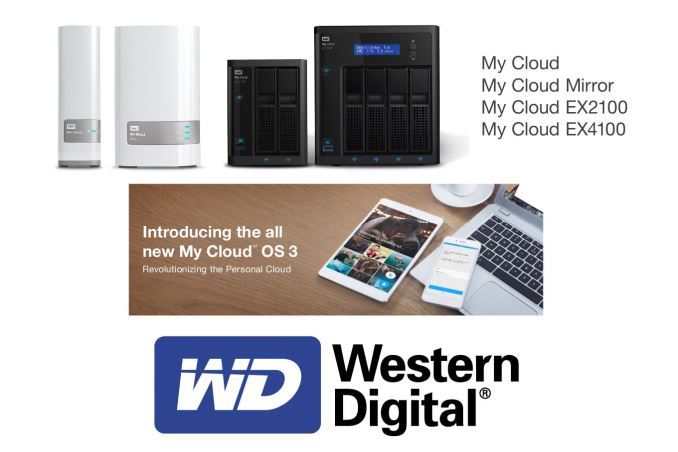




 Quote
Quote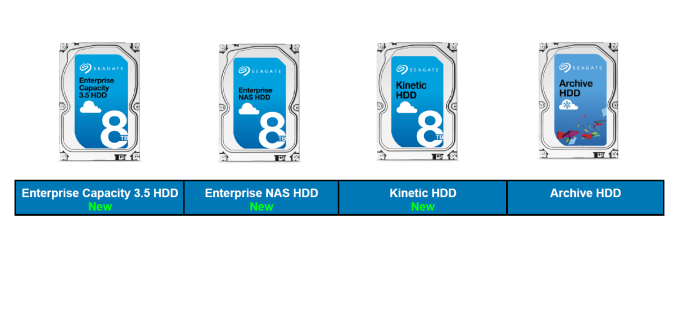
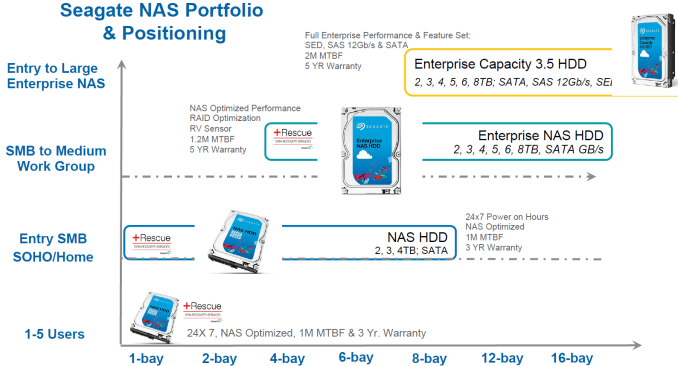
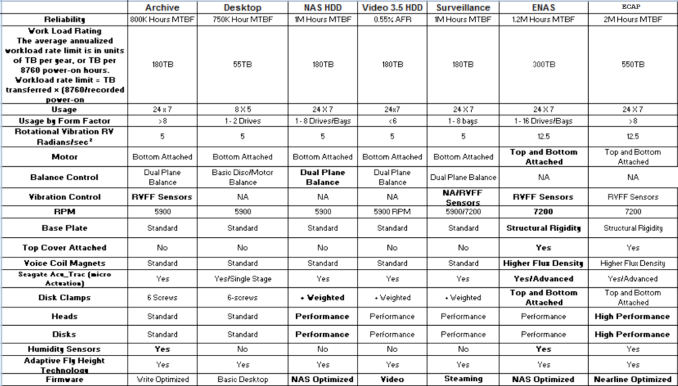

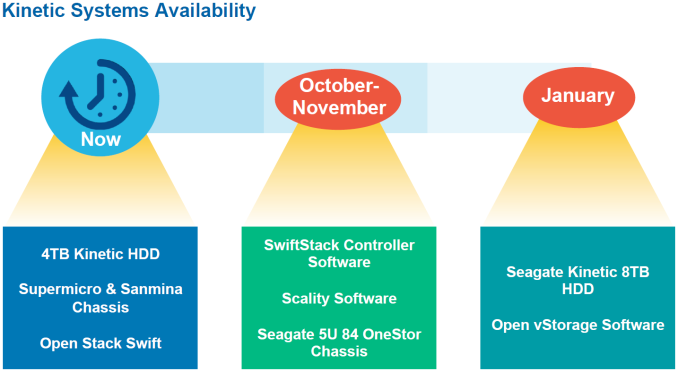






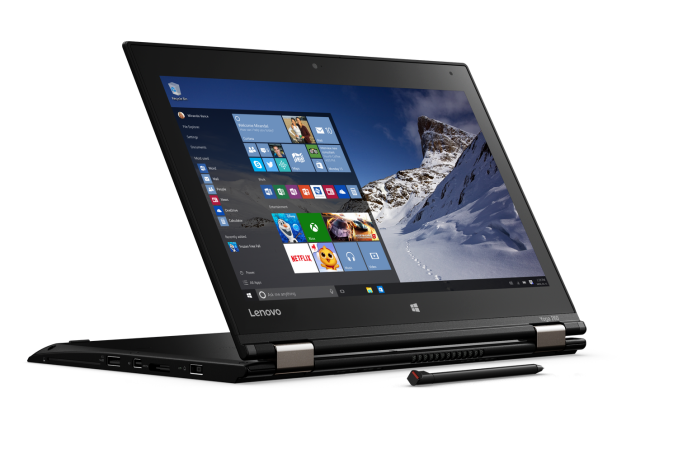

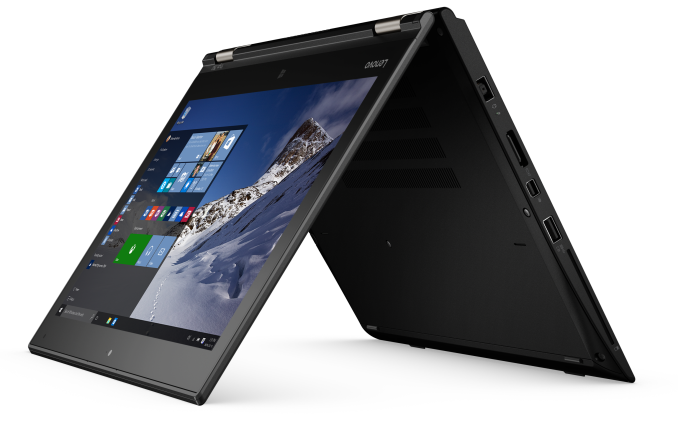
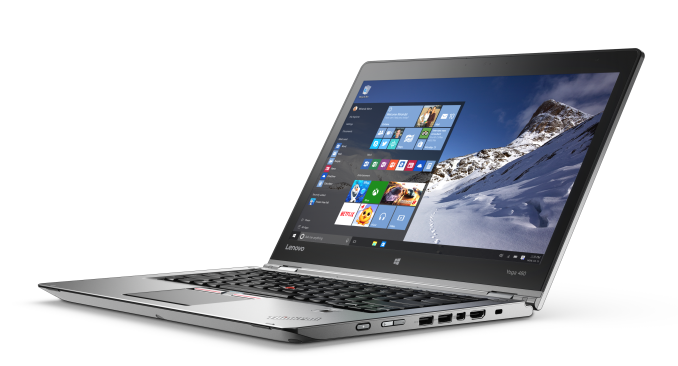

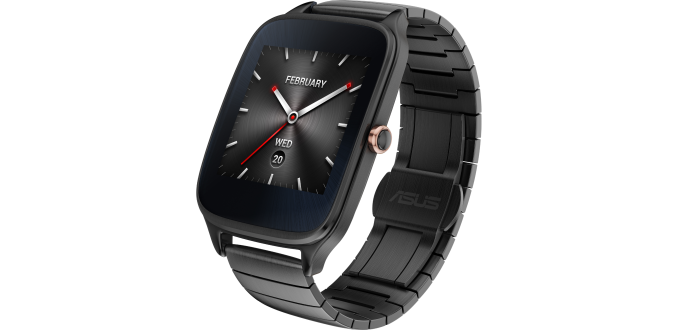
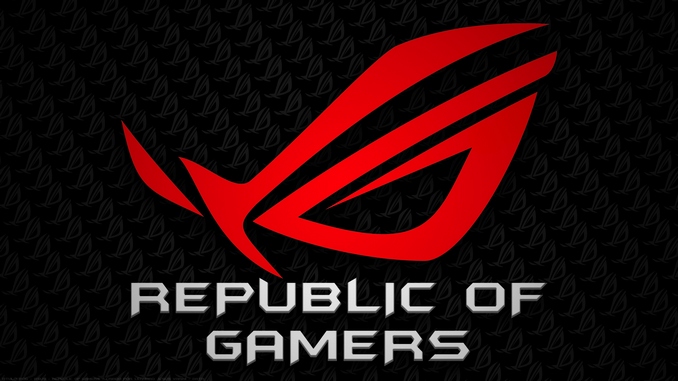

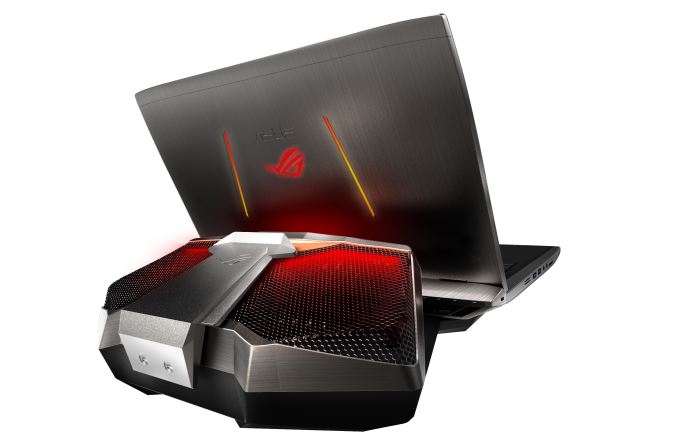
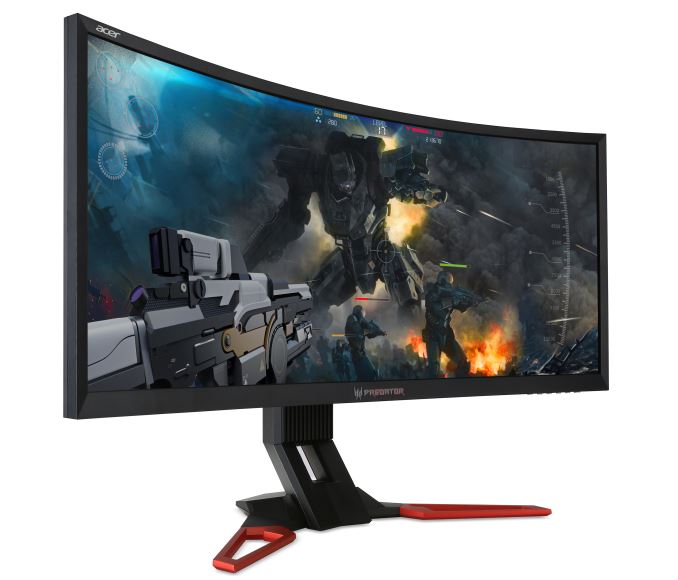
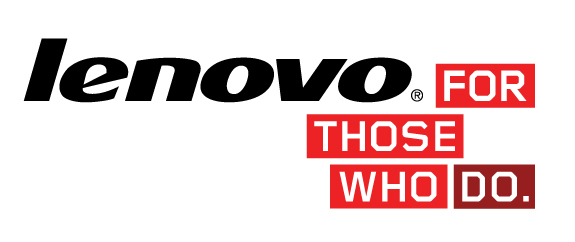

















Bookmarks